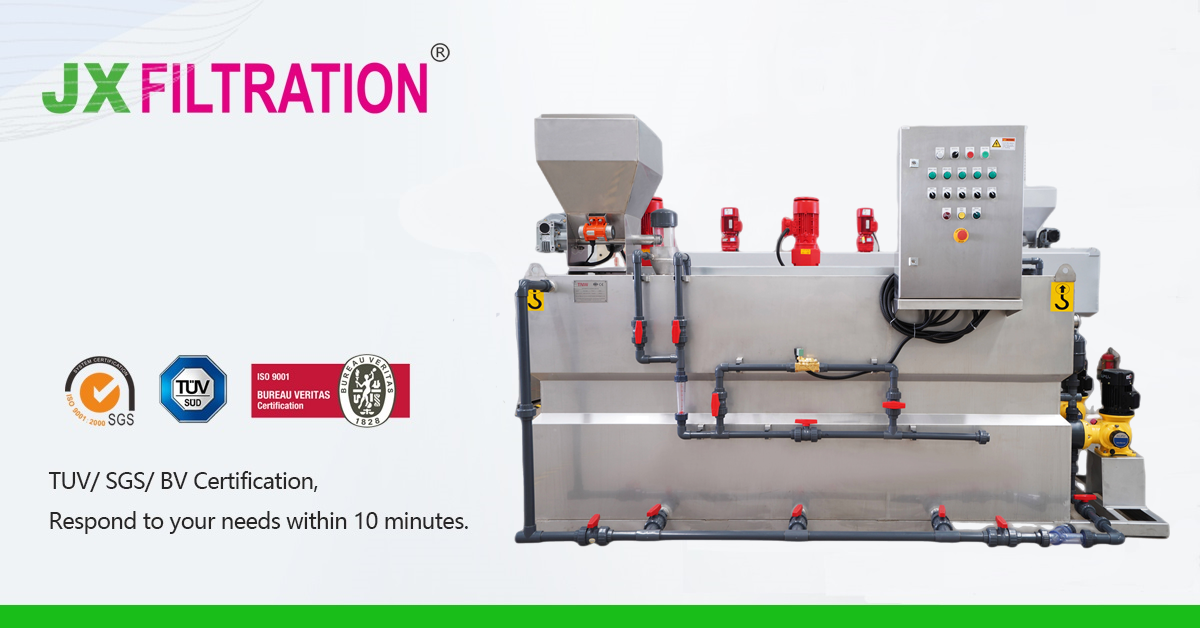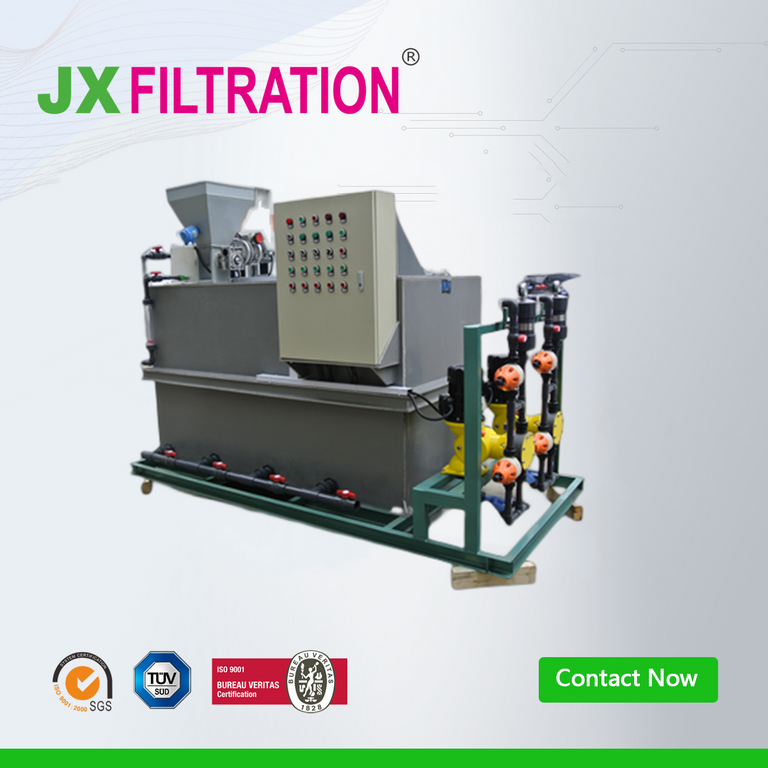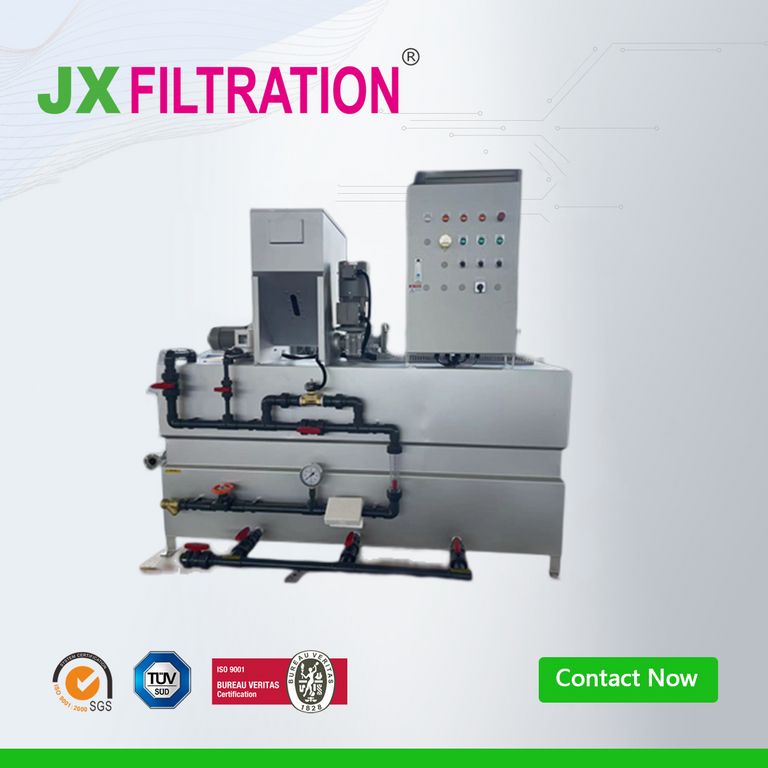How to Operate PAC/PAM Dosing System?
PAC and PAM
Polyaluminum chloride (PAC for short), also known as basic aluminum chloride or hydroxyaluminum chloride. Through it or its hydrolysis products, the colloid in the sewage or sludge quickly forms a precipitate, which is convenient for the separation of large particles of sediment.
Polyacrylamide (referred to as PAM), commonly known as flocculant or coagulant, belongs to the coagulant.

Reaction conditions and dosing requirements
Flocculation tank function: after the coagulant is added to the raw water, it is fully mixed with the water body, most of the colloidal impurities in the water lose stability, and the destabilized colloidal particles collide and condense with each other in the flocculation pool, and finally form a floc that can be removed by precipitation method.
Reaction conditions
The process of flocculent growth is the process of tiny particles touching and colliding. The quality of the flocculation effect depends on the following two factors: (1) the coupling ability of the polymer complex produced after the hydrolysis of the coagulant to form an adsorption bridge, which is determined by the nature of the coagulant; (2) The chance of tiny particles colliding and how to control them for reasonable and effective collisions.
The discipline of water treatment engineering believes that in order to increase the probability of collision, it is necessary to increase the speed gradient, and to increase the speed gradient, it is necessary to increase the energy consumption of the water body, that is, to increase the flow rate of the flocculation pool.
If the particles in the flocculation grow too fast, there will be two problems: (1) The floc grows too fast and its strength is weakened, and the strong shear encountered in the flow process will make the adsorption bridge cut off, and the adsorption bridge that is cut is difficult to continue again, so the flocculation process is also a speed-limited process, with the growth of the floc, The speed of the water flow should be continuously reduced, so that the formed floc is not easy to be broken; (2) Some flocs grow too quickly will make the specific surface area of the flocs in the water decrease sharply, some small particles with imperfect reactions lose the reaction conditions, and the probability of collision between these small particles and large particles is sharply reduced, it is difficult to grow up again, these particles can not only not be intercepted by the sedimentation tank, but also difficult to intercept for the filter.
Dosing requirements
In the early stage of the reaction with the coagulant, the chance of the agent touching the sewage should be increased as much as possible, and the stirring or flow rate should be increased. Relying on the collision of water flow with the folding plate and the water flow multiple times between the folding plates to increase the speed, the collision chance of particles in the water is increased, and the floc is condensed. In the later stage of the reaction, in order to reduce the speed gradient, better flocculation and precipitation effects can be obtained.
Any requirements, contact us now!
Grace
Email:grace@filtrationchina.com
Mobile/Whatsapp/WeChat:+86 17269571160



